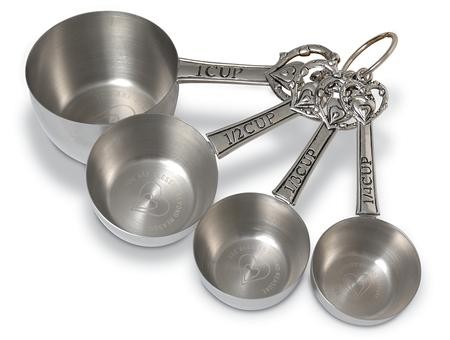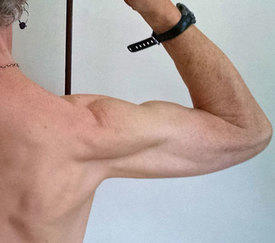We are pleased to announce that on March 4, 2025, an updated Rich Text Editor will be introduced in the MyFitnessPal Community. To learn more about the upcoming changes, please click here. We look forward to sharing this new feature with you!
portion sizes

emailsbmoore
Posts: 1 Member
Does anyone know what size a "bowl" or "cup" is as listed when recording the diary.. is it literally whatever I think is a standard size of each?
0
Replies
-
A bowl really isn't standardised. A cup is a standardised volume measurement (or it should be, depends on whoever created the entry).
I suggest avoiding these types of entries that are either too vague too be useful (bowl) or not useful for certain types of foods (cups are only accurate for liquids, and only standardised cups) and weigh your food on a scale and use entries that allow you to enter the food in grams.
There are a lot of 'iffy' entries in the food database: inaccuracies, incomplete entries, homemade recipes that might not correspond with how you prepare your own food,... It pays to look for accurate ones.5 -
If it says a 'bowl'...I'd think it has the possibility of being very iffy as far as accuracy.
If it says 'cup' --- that's like a measuring cup --- which is good, but can still be inaccurate.
Weight measurements are best. So, when available...I choose to log entries that include weight.2 -
I avoid volumetric measurements whenever I can. The FDA is honestly doing us all a disservice by allowing such vague descriptions on food labels... among other things.4
-
the only thing that should be weighed or measured in cups are spoons are liquids.
anything solid should be weighed on a food scale in grams.1 -
I'd avoid anything listed as a "bowl" or "cup" if it's talking about a serving dish -- you have no way of knowing WHAT the person who created the entry had in mind. If we're talking about cup as a liquid measure, I would feel comfortable using that for liquid foods.4
-
sometimes I'll see entries for "bowls" for prepackaged items that come in bowls and that list 1 bowl on the package's nutritional labeling as the serving size. In that case I would use it if it matched the labeling (although I would weigh to double check if the packaging also listed a weight in parentheses after bowl, as U.S. labels often do).
But if it's not something like that, I wouldn't use an entry that said "bowl."2 -
emailsbmoore wrote: »Does anyone know what size a "bowl" or "cup" is as listed when recording the diary.. is it literally whatever I think is a standard size of each?
A "bowl" is meaningless...a "cup" is an actual measurement, but it's a measuring cup, not some cup you just pull out of your cupboard. "Cups" if used, should primarily be used with liquids...solids are iffy, though I do use them for things like oats or rice, etc as I don't really care if I'm down the very last gram of accuracy...but something like a "cup" of chicken is pretty meaningless as to how much chicken that would be...it would be variable based on the size of the cubes or whatever.
Liquid measuring cup...
Dry goods measuring cup1 -
If I find a "cup" or "bowl" measurement, I look for another entry that gives me the portion in grams or milliliters2
-
rosebarnalice wrote: »If I find a "cup" or "bowl" measurement, I look for another entry that gives me the portion in grams or milliliters
^This.
If you really want to know what something weighs or get an exact measurement, put grams or ml in your search.2 -
OP, don't forget that the serving size has a drop-down arrow. Some of the classic USDA entries (the ones MFP staff loaded at startup years back) start with a default 1 Cup entry. But when you click the drop-down on the Cups serving size, there will be many other options: weights, volume measures, sometimes inch sizes, and more. You can often spot these because they have names like "Tomatoes, red, ripe, raw, year round average" that only a bureaucrat could love. 😆 But other non-bureaucrat ones sometimes have multiple choices, too.
But I agree with the others: Use weights, preferably grams (more precise), and weight foods on a food scale, for best accuracy. Even some liquids can be weighed (i.e., there are weight entries in the database already for a lot of common liquids, like milks, oils, etc.).1
This discussion has been closed.
Categories
- All Categories
- 1.4M Health, Wellness and Goals
- 394.3K Introduce Yourself
- 43.4K Getting Started
- 259.7K Health and Weight Loss
- 176.1K Food and Nutrition
- 47.5K Recipes
- 232.3K Fitness and Exercise
- 440 Sleep, Mindfulness and Overall Wellness
- 6.5K Goal: Maintaining Weight
- 8.6K Goal: Gaining Weight and Body Building
- 153.1K Motivation and Support
- 7.8K Challenges
- 1.3K Debate Club
- 96.4K Chit-Chat
- 2.5K Fun and Games
- 4K MyFitnessPal Information
- 16 News and Announcements
- 918 Feature Suggestions and Ideas
- 2.7K MyFitnessPal Tech Support Questions









